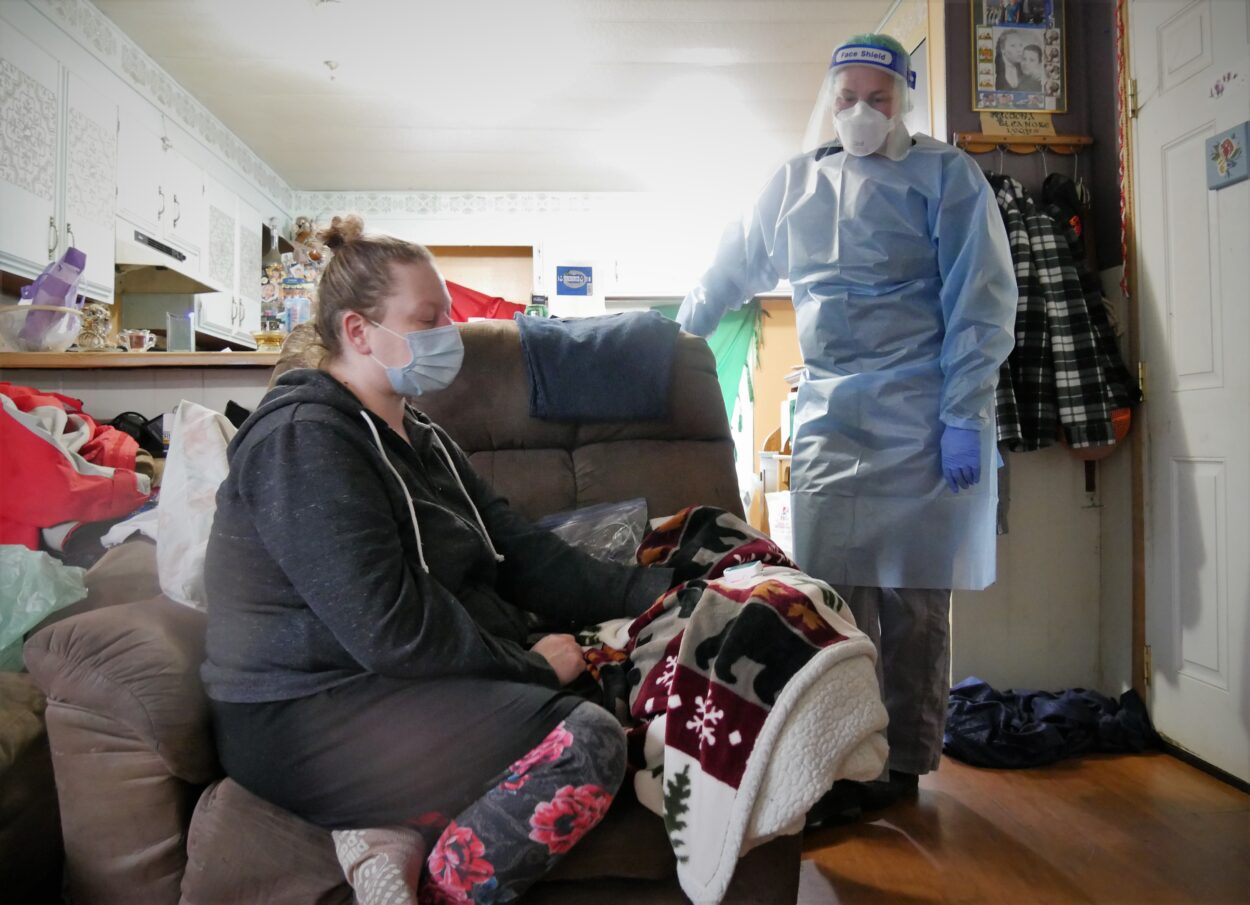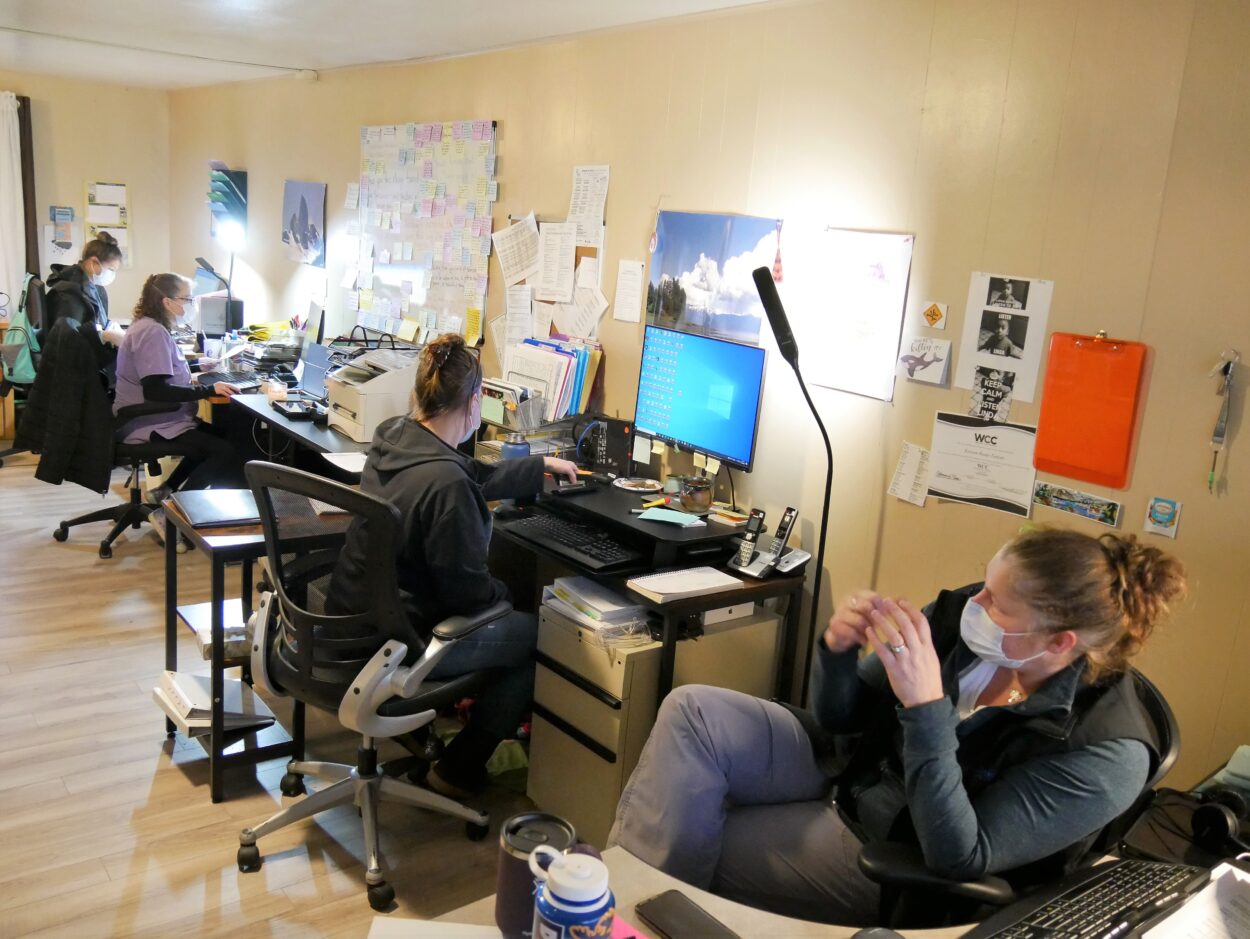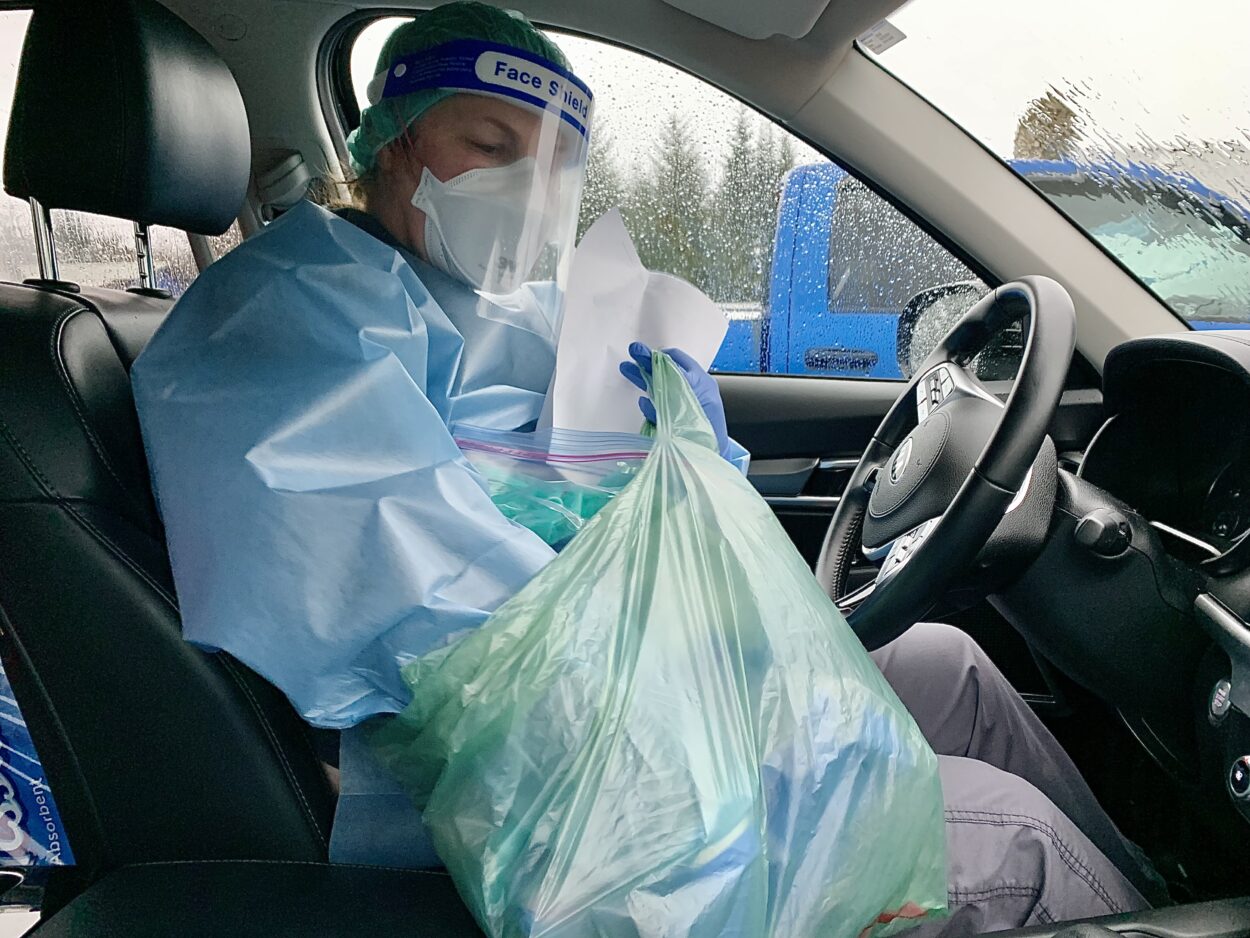
While the nation is focusing on the emergence of the omicron variant of COVID-19, delta is still responsible for a widespread outbreak in the remote island town of Petersburg, Alaska. More than 7% of the town’s 3,000 residents got infected in November alone. On the front lines of this outbreak is a team of home health nurses, going door-to-door treating patients. KFSK’s Angela Denning has their story.
“This is our COVID section right here,” said Nurse Kirsten Testoni, while sorting through medical equipment inside the home health supply room. Metal shelves stacked with supplies take up one of the walls.
“Hey Evonne?” she asked another nurse.
“Yeah?”
“Do you have any more of those batteries? We’re like out of pulse ox’s.”
Pulse ox is short for pulse oximeter — those little clamps that go on your finger and measure your blood oxygen levels. They’re in high demand right now in Petersburg.
“You come in with sort of a plan but your day goes from zero to 60,” Testoni said.

Testoni manages a team of eight. Three years ago, there were only two home care nurses in this office. The additional staff has come from other departments, ERs, clinics, long-term care.
Lena Odegaard had worked in all of them. She says she likes home health because she can focus on one patient at a time but it’s also challenging.
“There’s just so many elements you can’t control,” she said. “Whereas, when you’re in the facility, you can kind of restrict visitors and what people are doing to a point.”
Sometimes, there are patients who should go to the hospital but they don’t want to.
“We find that quite often in home health, especially during this pandemic,” said Odegaard. “Sometimes there’s a little bit of a resistance.”
Many times the nurses will transport patients to the hospital themselves or they can call an ambulance.
Stephanie Romine says home health is different than her many years working in the hospital.
“You never know, you can walk in and find someone on the floor,” Romine said. “You really don’t know what you’re walking in to a lot of times.”
Many hospitals have home health departments but it’s different in a rural town like Petersburg, says Jared Kosin. He heads the Alaska State Hospital and Nursing Home Association.
“You’re going to have almost, in some respects, a more nimble healthcare system because everybody knows everyone,” Kosin said. “When we’re in a crisis like this, can we meet this problem head on before it becomes a bigger problem and requires hospitalization.”
During this latest Delta surge in Alaska, it’s been crucial to keep people out of the hospital — not just Petersburg’s local clinics, but also keeping people from getting medevac’d to the bigger hospitals in Anchorage.
Plus, it’s a more personal way to receive care. This team in Petersburg is planning on keeping up this level of home health care even when they’re no longer caring for COVID patients.

Later in the day, Testoni is in her car gearing up to visit a small house where three people are infected with COVID.
She puts on two face masks, goggles, a hair net, a gown, and blue rubber gloves.
“Alright…You ready? Let’s do it,” she said.
Natocha Lyons answers the door. She’s 43. She’s in a black sweatshirt, her blond hair pulled back.
“Sorry my house is not cleaned,” Lyons said. “I don’t have any energy.”
In the last week, she’s been to the ER twice.
“I was so bad and so weak I couldn’t even get up to go pee at one point. I had to have help from my son,” Lyons said.
Home health drove her back and forth to the hospital. She received oxygen, IV fluids, monoclonal antibody treatment, and steroids.
“If it wasn’t for the home health people I wouldn’t have made it because I was too weak to drive myself, I was too weak to even walk, I was too weak to do anything,” she said. “It’s been very scary for me.”
Testoni checks out her oxygen levels.
“Ooo, it was 98! That’s the best it’s been since forever!” said Lyons. “The lowest I went was 84.”
“Yeah, that’s pretty low,” Testoni said.
Like many Petersburg residents this team has been caring for this month, Lyons isn’t vaccinated. And she hasn’t changed her mind even after two trips to the ER.
But Testoni never pushes the issue.
“That’s not our role,” she said. “We don’t do that. We are going to take care of people regardless of what their choices are.”
Walking back to the car, Testoni says her job isn’t to convince patients of anything. It’s to meet them where they are. And so far, that’s been enough to keep them alive.









